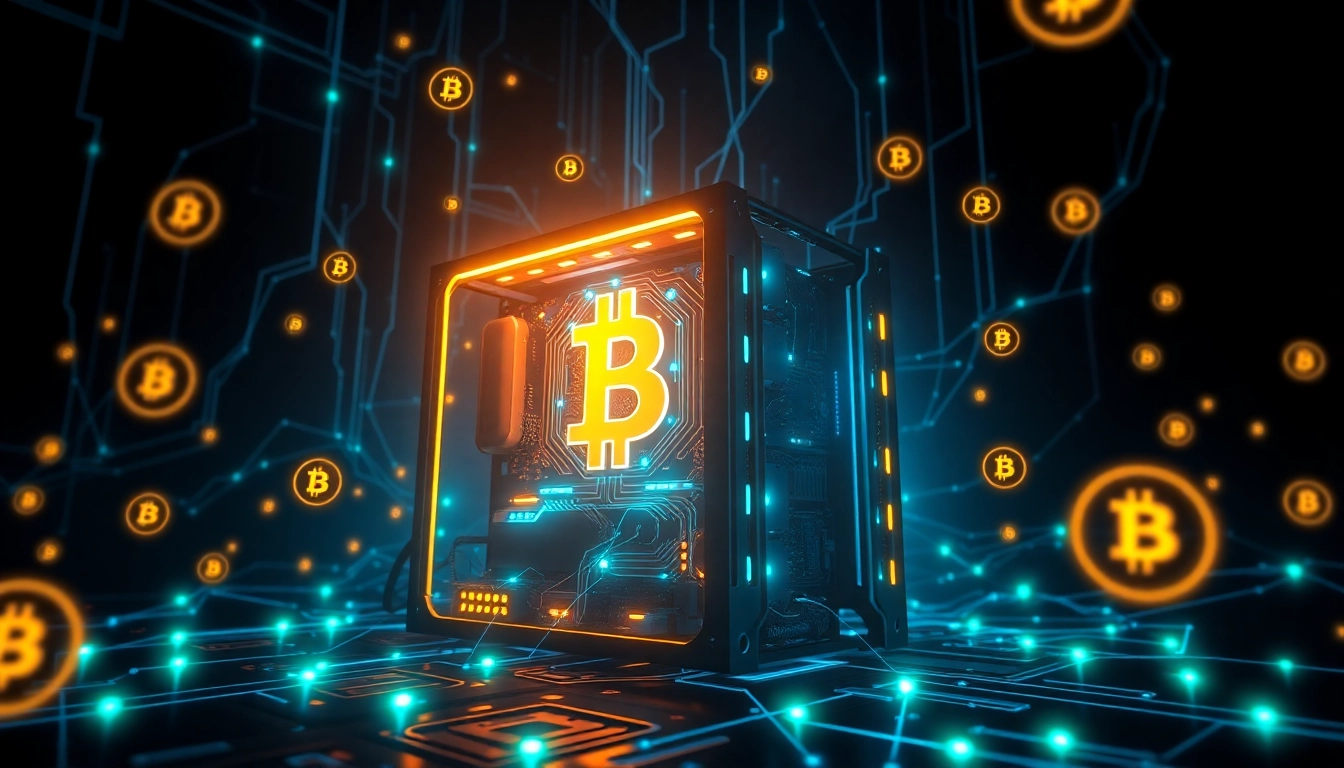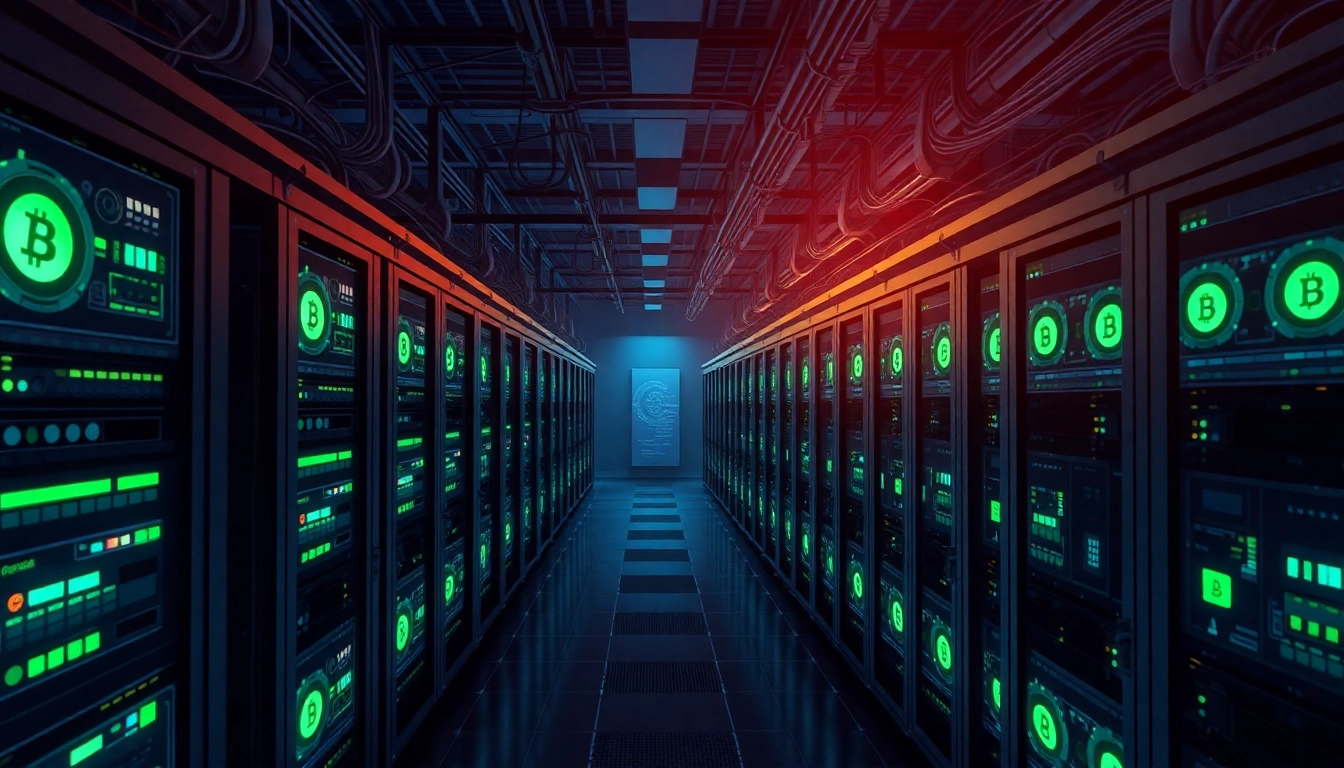Understanding Bitcoin Mining Basics
Bitcoin mining is a multifaceted process that underpins the whole cryptocurrency system, allowing users to participate in and affirm the operation of the Bitcoin network. It engages various stakeholders, from casual home miners to specialized enterprise-level mining farms. Anyone can get involved, provided they understand the essential concepts, tools, and conditions that govern mining. The intent of this article is to demystify the complexities of Bitcoin mining, exploring everything from its basic definitions to advanced techniques that promise higher profitability.
What is Bitcoin Mining?
At its core, Bitcoin mining is the process of validating and adding transactions to the blockchain, Bitcoin’s decentralized public ledger. Miners use powerful computers to solve complex mathematical puzzles, which are crucial in ensuring the security and integrity of the cryptocurrency network. When a miner solves the puzzle, they are rewarded with newly minted bitcoins, alongside the transaction fees associated with the transactions they’ve verified. This mechanism creates an incentive structure; the higher the computational power, the more chances a miner has of earning rewards.
How Does Bitcoin Mining Work?
The mechanics of Bitcoin mining revolve around a few critical components: blocks, transactions, and the blockchain. A block contains a set of transactions that have taken place across the network within a defined period. Miners compete to solve a cryptographic puzzle related to the block, a requirement known as Proof of Work (PoW). The first miner to successfully complete the puzzle broadcasts their solution to the network, where it is validated by other miners. If confirmed, the new block is added to the blockchain, effectively “closing” those transactions. The work required to add a block not only secures the network but also adjusts the difficulty of mining, ensuring that adding new blocks happens roughly every ten minutes.
The Importance of Bitcoin Mining to the Network
Bitcoin mining plays several crucial roles in ensuring the health and security of the ecosystem. Beyond creating new bitcoins, it provides security to the network against malicious attacks. Mining helps to prevent double spending, as each transaction needs to be verified and recorded in a new block. Also, as the mining process is intrinsically tied to the blockchain, it contributes to the decentralized nature of cryptocurrency. This decentralization means no single entity controls the entire network, reducing the risk of fraud and manipulation.
Getting Started with Bitcoin Mining
If you’re considering entering the world of Bitcoin mining, understanding the initial setup is vital. It involves a combination of selecting the right equipment, choosing software, and determining an operational strategy that aligns with your goals.
Choosing the Right Hardware for Bitcoin Mining
Your mining hardware is arguably the most determinant factor for mining profitability. Graphics Processing Units (GPUs), Application-Specific Integrated Circuits (ASICs), and Field Programmable Gate Arrays (FPGAs) are the primary hardware types used to mine Bitcoin:
- GPUs: These are open to wider applications beyond mining, such as gaming or graphic design. However, they are not the best choice for Bitcoin due to their relatively low hash rate.
- ASICs: Dedicated mining machines specifically engineered for mining cryptocurrencies. ASIC miners are the most efficient and have become the industry standard for Bitcoin mining.
- FPGAs: These offer a middle ground between versatility and performance but are less common in Bitcoin mining.
Ultimately, while the initial investment for ASICs can be high, it results in stronger, long-term profitability.
Setting Up Your Bitcoin Mining Rig
Setting up a mining rig entails more than just acquiring hardware. It involves the following steps:
- Assemble the components: Connect your mining hardware—either in a desktop configuration or building a dedicated mining rig.
- Install the mining software: Choose reputable mining software compatible with your hardware. Popular mining software options include CGMiner, BFGMiner, and EasyMiner.
- Join a mining pool: Given the competitive nature of mining, pools allow a group of miners to combine resources and share rewards. Research pools based on fees, payout structures, and reputation.
- Configure the mining software: After installing the software, configure it with your Bitcoin wallet address and the mining pool details.
Finally, keep your mining rig in a cool, ventilated place to maintain optimal performance.
Joining a Bitcoin Mining Pool: Pros and Cons
Mining pools have become increasingly popular, especially among individual miners who might otherwise lack sufficient computational power to compete effectively.
Pros:
- Higher likelihood of earning consistent rewards due to pooled resources.
- Lower variance compared to solo mining—more predictable earnings.
- Access to community support and resources.
Cons:
- Fees deducted from rewards can reduce profitability.
- Potential for less control over your mining activities.
It’s vital to evaluate your level of commitment and how much upfront capital you can afford, as these factors will influence your decision on joining a mining pool.
Advanced Bitcoin Mining Techniques
Experienced miners often use advanced techniques to enhance their mining efficiency and profitability. These involve leveraging technology and data analytics to make informed decisions.
Cloud Mining: A Viable Alternative?
Cloud mining is an alternative to traditional mining that enables users to rent computing power from a third party instead of managing their own hardware.
Pros:
- No need for hardware management or maintenance.
- Lower upfront costs and risks associated with equipment purchase.
Cons:
- Reliant on the cloud service provider’s reliability and trustworthiness.
- Potentially lower profitability due to fees charged by provider.
For users who are new to Bitcoin mining or prefer a hands-off approach, cloud mining can be an attractive option.
Optimizing Your Mining Operations for Maximum Profit
Optimization strategies can significantly enhance your mining profitability. Consider the following measures:
- Adjust Pacing: Monitor the network to time your mining efforts with low traffic periods, potentially capitalizing on favorable conditions.
- Electricity Costs: Choose locations with cheaper electricity rates as this expense will heavily impact profitability.
- Cooling Solutions: Invest in efficient cooling systems to enhance hardware performance and longevity.
- Regular Updates: Keep mining software up-to-date to ensure access to the latest features and security fixes.
Understanding Mining Difficulty and Its Impact
Mining difficulty is a measure of how hard it is to mine a new block in the Bitcoin blockchain. The network automatically adjusts difficulty approximately every two weeks based on the collective hashing power of all miners. When more miners join the network, the difficulty increases, and vice versa. Miners need to be aware of this to understand how it impacts their profitability:
- Increased Difficulty: More computational resources are required, and miners may need to invest in more powerful hardware.
- Market Value Impact: If Bitcoin’s market value does not increase alongside difficulty, profitability may drop.
Successful miners stay informed of market conditions, adjusting their strategies accordingly.
Challenges in Bitcoin Mining
While Bitcoin mining presents opportunities for profit, it also poses significant challenges that can impact your operations. Understanding these hurdles and planning effective strategies is essential for long-term success.
The Environmental Impact of Bitcoin Mining
One of the most pressing challenges facing Bitcoin mining is its perceived environmental impact. The energy-intensive nature of mining has raised concerns regarding sustainability:
Miners often utilize fossil fuels or non-renewable energy sources, contributing to carbon emissions. Innovations in renewable energy and more efficient mining hardware are critical to mitigating these effects. Furthermore, practitioners are encouraged to advocate for eco-friendly practices in the industry.
Overcoming Technical Challenges in Mining
Technical issues frequently arise within mining operations. Network outages, hardware failures, and software bugs can disrupt operations significantly. Here are some techniques to circumvent these challenges:
- Backup Systems: Implement redundant systems to minimize downtime during hardware failure.
- Regular Maintenance: Schedule routine checks and updates for hardware and software to ensure optimal performance.
- Monitoring Tools: Use tools to monitor network performance and temperature to quickly identify issues.
Security Risks and How to Mitigate Them
As Bitcoin mining becomes more prominent, so does the potential for security risks such as theft, hacking, and scams. Here are strategies to enhance your mining operation’s security:
- Secure Wallets: Use hardware wallets to store your earnings, keeping them safe from online attacks.
- Two-Factor Authentication (2FA): Enable 2FA wherever possible for added account security.
- Research Partners: Exercise caution when choosing mining pools and cloud services; always verify their reputation.
The Future of Bitcoin Mining
The cryptocurrency mining landscape is subject to rapid changes due to technological innovations, regulatory developments, and evolving market dynamics. Keeping abreast of these trends is crucial for miners looking to stay competitive.
Trends Shaping the Bitcoin Mining Landscape
Several trends are currently shaping the Bitcoin mining industry:
- Green Mining: Increasing scrutiny on environmental impacts is pushing miners towards adopting greener energy sources.
- Decentralization of Mining Pools: The growth of decentralized mining pools is spreading the computational demands across a more extensive network, enhancing fairness.
- Technological Innovation: Advancements in hardware and software are continuously improving mining efficiency and profitability.
Regulatory Considerations in Bitcoin Mining
As Bitcoin mining grows in prominence, so does government interest in regulation. This has significant implications for how miners operate:
- Regulations can impact energy usage mandates and taxation on mining profits.
- Countries may impose restrictions on mining, affecting operational viability.
- Miners should stay informed of evolving regulations to ensure compliance and avoid potential penalties.
Innovations on the Horizon for Bitcoin Mining
As the industry progresses, several innovations are on the horizon that could redefine Bitcoin mining:
- Quantum Computing: There are concerns regarding quantum attacks to Bitcoin network security, but such technology could also enhance mining strategies.
- Enhanced AI Solutions: Automation and AI can optimize mining strategies in real-time based on market conditions.
- Blockchain Upgrades: Future updates to the Bitcoin protocol could improve scalability and transaction speeds, affecting mining dynamics.
Staying attuned to these trends and innovations will be essential for any miner serious about long-term engagement in the Bitcoin ecosystem. As the market evolves, so too must strategies and practices employed by miners seeking to maximize profits while ensuring adherence to emerging standards and regulations.


